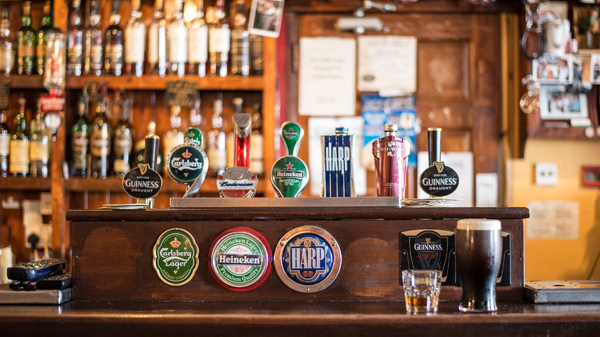As thirsty patrons gazed into the far distance, past the twisty line of empty-glass-handed booze-queuers that preceded them, it was clear to all but the most willfully contrary that this occasion did, indeed, mark Hong Kong’s ascendance to the very highest levels of hop-flavoured maltdom. The occasion, of course, was Beertopia 2018, the seventh iteration of the semi-legendary quafferthon, which came to a slightly cloudy head on Hong Kong’s Central Harbourfront in early October.
Even more remarkable than the volume of imbibery afoot was the sheer volume of craft beer there was for imbibing. Wind back to 2011 – or 1 BC (Before Craft) as pintaphiles refer to it – and Hong Kong, while hardly beer-free, was merely awash with the bog-standard brewings of the big boys. While there was the ever-present threat of a Tsingtao-tsunami or a Foster’s flash flood, traces of yer actual craft beer were rarer than body-popping Buddhists.

Even The Globe, one of the most iconic of the island’s pubs, despite boasting a dozen taps and a 200-strong beer menu, was limited to serving solely-imported bevvies. As owner Toby Cooper lamented, looking back at that time: “While there was no shortage of imported beers, local craft beers were harder to come by than a peak time seat on the Island Line.”
Deciding to be part of the solution, in 2013 – just 12 months after the very first Beertopia – Cooper co-founded the Craft Beer Association of Hong Kong. Today, as sign of its success, the Association can point to the fact that Hong Kong is now home to 35 microbreweries. Five years ago, there were just two.

Of the 33 brewcomers, two have proved particularly influential – Rohit Dugar, founder of Young Master Ales, and Christopher Wong, his counterpart over at HK Brewcraft, Explaining how it all started for him, Wong says: “In 2013, a few friends and I – all of us truly endeared to beer – realised that Hong Kong lacked a home brew store, one where you could buy everything, including actual brewing equipment. Thus HK Brewcraft was born and we’ve never really looked back.”
Dugar has a similar story to tell, saying: “When people realise that something has potential, things tend to move quickly in Hong Kong. In our case, at least some of our popularity is down the distinctly Asian ingredients and local flavour profiles we’ve favoured. For instance, we use local ingredients like soba (buckwheat), which allow us to create beers that are truly local in flavour.”

Others, though, have prioritised history over geography. In the case of the Moonzen Brewery – founded in Kwun Tong in 2014 – it teamed up with Beijing-based Jing-A Brewing to recreate one particularly ancient beer, the recipe for which was uncovered during an archeological dig in Xi’an.
For those not opting to resurrect the craft beers of classical times, wily marketing has often sufficed. In the case of the splendidly unimaginatively named Hong Kong Beer Company, brews such as Dragon’s Back Pale Ale and Big Wave Bay IPA had just enough hometown appeal to woo the locals. Whatever the strategy adopted, the outcome is undeniable, with some 600,000 litres of craft beer now knocked back every year from Hong Kong Beer Company alone.

Above all, it’s the desire to create something new that seems to inspire most craft beer creators. One such case is Mike Hu, an amateur home brewer who has taken it up as a hobby. Testifying to the sheer joy of his own experience, Hu says: “Once one of my beers is ready, I get together with the other home brew guys and we check out each other’s brews. It’s great fun.”
For those looking to take the hobby to the next level, Hong Kong now even has its own version of a home brewing contest – the Hoppy Cup – which takes place later this month. With everyone from newbies to old hands welcome to compete, no doubt the longer queues at future Beertopias will be for many of the winning brews.
Text: Suchetana Mukhopadhyay



